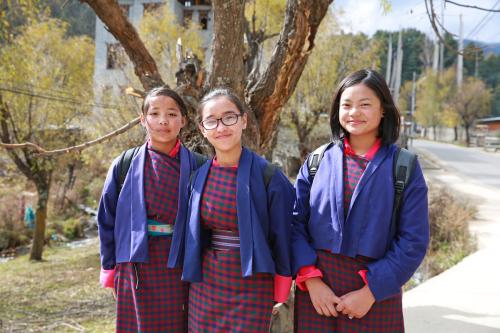Approximately a third of the Earth’s land mass is covered by forest, which supports water protection and 80 percent of terrestrial biodiversity. Forests are not only ecological assets, but they also sustain economic growth by providing timber and non-timber consumptive goods and livelihoods for approximately one-fourth of the world’s population. In 2004, trade in forest products was estimated at $327 billion. Therefore, uncontrolled deforestation has devastating consequences for the environment and the global economy.
Forested land is under increasing pressure due to high population growth, rising consumption rates for timber and non-timber products, unsustainable harvesting and economic development policies that promote expansion agriculture into marginal lands. As a consequence, deforestation has increased at an alarming rate of 13 million hectares per year, which is about the size of Alabama. Deforestation and forest degradation account for approximately 18 percent of global greenhouse gas (GHG) emissions, more than the entire global transportation sector and second only to the energy sector. The continued loss of forests in the world not only threatens livelihoods, but also the environment.
One way to constrain the impacts of climate change is to reduce emissions from and through the forest sector as a complement to ongoing climate change policies. Collaborative forest rehabilitation efforts around the world are a start, but they cannot be done by governments and the private sector alone. School-based reforestation initiatives are an important way for students, teachers, and communities to make tangible contributions to climate change mitigation efforts.
Forests: Green Lungs of the World
The most essential service provided by forests is their role as a natural carbon sink or ‘the green lungs of the world.’ As part of the global carbon cycle, forests can absorb, store and convert vast amounts of carbon that would otherwise escape into the atmosphere as CO2. The conservation and rehabilitation of these natural carbon stores are essential to climate change mitigation efforts.
While deforestation and forest degradation continues at alarming rates, the growing awareness of the role of forests in protecting against climate change has sparked efforts in many countries to offset forest loss through rehabilitation programs. The international community is working toward REDD+ (Reducing Emissions from Deforestation and Forest Degradation) in the United Nations Framework Convention on Climate Change, an effort to create a financial value for the carbon stored in forests by offering incentives for developing countries to reduce emissions from forested lands and invest in low-carbon paths to sustainable development.
However, there are many concerns about REDD+ efforts, such as the possible negative impacts on economic growth, loss of national sovereignty and environmental integrity and the potential for large money flows to lead to misuse, corruption and displacement of people. In addition, the role of indigenous peoples in developing and applying REDD+ methodologies remain unresolved. It is critical that the REDD+ effort goes beyond deforestation and forest degradation to include the role of conservation, sustainable management of forests, and enhancement of forest carbon stocks and biodiversity. With millions of community-based education initiatives and schools around the world, school and indigenous forest community involvement in reforestation and climate change education is an important way that the global education community can make a contribution to climate change mitigation efforts.
Educating and Planting Trees for the Future
It is not only economic measures that are necessary to empower communities to eradicate the root causes of deforestation and degradation in order to move toward the successful implementation of REDD+ efforts. Through innovative school-based educational approaches and life-skills based environmental programming that encourage the protection of ecosystems and the sustainable use of natural resources, education is also critical to ensuring the return on investment from REDD+ projects.
For instance, in the Dapaong region of northern Togo, the Earth Child Institute is working with community-based organizations to develop school-based tree nurseries that integrate education into the sub-national reforestation and agroforestry initiative. Teachers and students are empowered through these school-based nurseries to care for saplings for an initial three to five year period until they can be planted in the forest. In doing so, schools simultaneously function as a platform for reforestation and REDD+ efforts while instilling participatory learning, which fosters confidence and competence among children and youth. School-grown saplings sold to REDD+ projects can generate a sustainable source of funds for schools that can be used to improve learning environments and increase availability of scholarship funds. Moreover, by using strategic planting methods that correspond to the region, ecosystem-derived benefits such as the prevention of flooding and erosion and the promotion of biodiversity can be enhanced.
Similar programs in schools in Peru, Brazil, Ethiopia, Malawi and Fiji not only serve to combat climate change and improve livelihoods, but they also create an environmental consciousness in young people that will have future benefits. Students gain an understanding and appreciation for conservation and they also develop practical life-skills that promote sustainable development within their communities. The 2.2 billion young people under the age of 18 worldwide will be the ones that have to cope with the impacts of climate change. They can be powerful agents of change and research has shown that relevant education on climate change and disasters in a school environment can reduce their vulnerability and their community’s vulnerability to disaster risk and contribute to sustainable development.
The knowledge and actions of educated young people can go beyond the classroom to help their parents and communities. Children and youth can play a pivotal role here because the important school lessons they learn on climate change and disaster risk reduction is often shared with their communities.
This year’s World Environment Day on June 5 seeks to draw attention to the need to reduce deforestation and forest degradation globally. In particular, there is a clear need for greater awareness about and investment in innovative and integrated educational approaches to forest rehabilitation and the sustainable use of natural resources. This includes better documenting and sharing of case studies and good practices within the education community. For that to happen, UNESCO, as the international organization with a mandate for education for sustainable development and climate change education, needs to show greater leadership by bringing together actors to network and share knowledge in order to strengthen the evidence base. The REDD+ arena and larger climate change mitigation community must also recognize the potential offered by the education sector and collaborate with education actors to combat climate change.



Commentary
Op-edSchool-Based Reforestation to Combat Climate Change
June 3, 2011